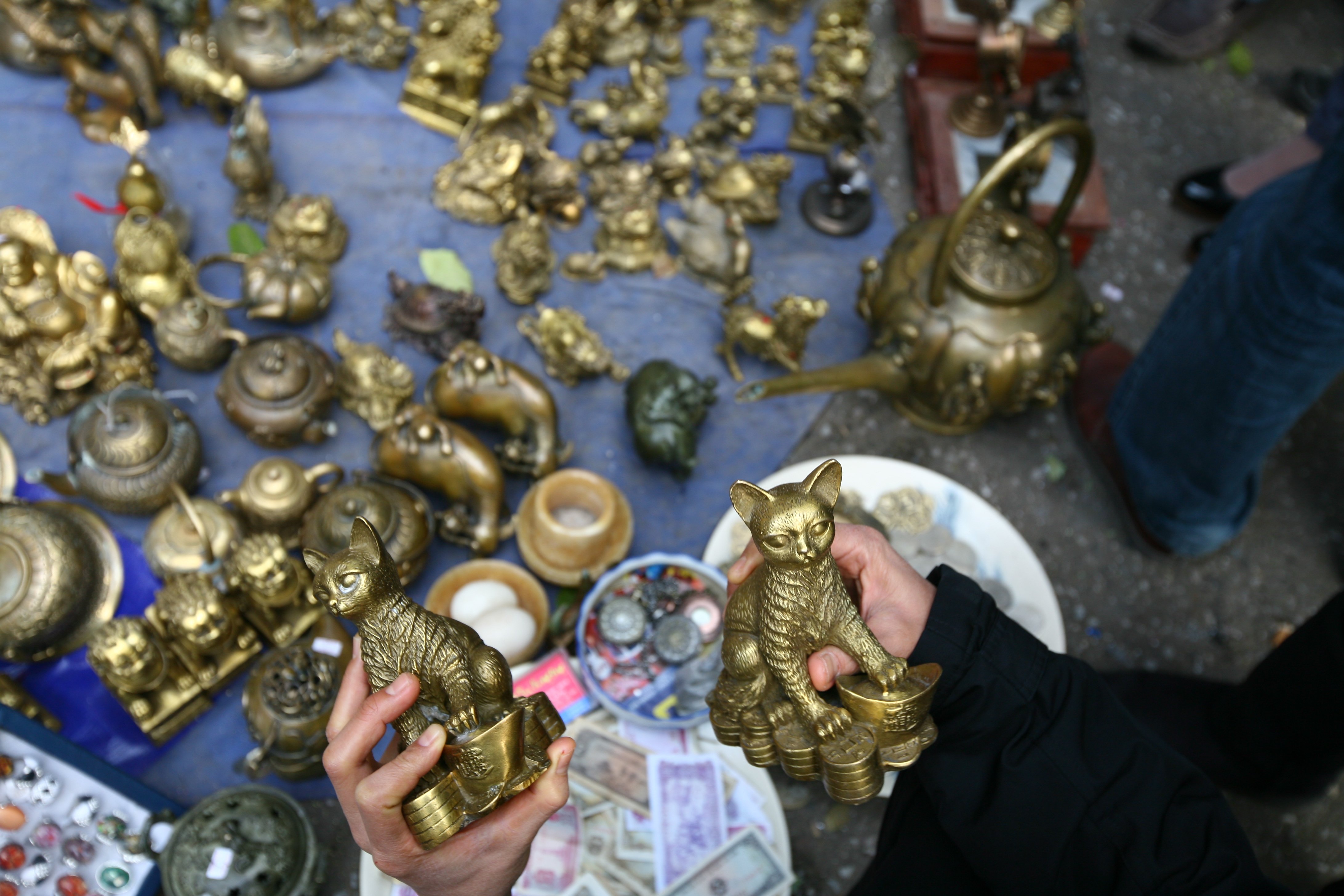Antiques
“You are just like your grandfather,” my mother always reminded me when I brought back one or two objects. My grandfather was also an antique collector in Hanoi. Although he was not as famous as Mr. Vinh in Ly Thai To or Mr. Duoc in Nguyen Truong To, he still kept many valuable items for himself. On the day he passed away, many friends and artists in Hanoi came to pay their respects, many also asked to buy back some of the items, but the family did not sell and only met the reasonable requests of the Vietnam History Museum. The rest continued to be carefully preserved by the family.
Continuing that tradition, since I was a child, I have shown a burning passion for things that my mother considered “throwaway”, from the Indochinese coin to the floppy hat my uncle used during the days of fighting against the Americans. At first, they were just old things lying around the house, but over time, I have accumulated a “fortune” in both literal and figurative sense. In my free time, I always spend time sitting and admiring them, cleaning them and imagining the stories they have gone through. Where were they born, who passed through their hands, what makes them special.

I still remember the day my uncle returned from a business trip to the Soviet Union and gave me an hourglass. It was the first time in his life that a 10-year-old boy had seen such a strange thing. Sand flowed from one jar to another in a vertical direction. It was super real that people thought it was a clock, because in my mind at that time, only the sound coming from the pendulum clock hanging on the wall was a clock (this was also an extremely ancient item of my grandfather). I fondled that clock all day, brought it with me to school, ate with it next to it, and sat and watched it without getting bored. Every time the sand ran out, I turned it upside down to let the sand flow from the top, it was so fun to watch. I asked my mother: "Why are people so good, Mom, coming up with so many interesting things?" My mother just smiled and turned to my father: "It's just like your grandfather!"
Twenty years have passed in a flash, my uncle has passed away, the old scene and old people have changed, luckily I still keep that hourglass and place it solemnly in my “property”. Sometimes looking at the small grains of sand falling down, flowing like a stream, I think about life. Calling them antiques because they are historical witnesses, carrying stories, unforgettable memories about relatives, about society, about life. Looking at them, it seems like I am reliving that moment, that time, that space. My uncle is still here, still feeling the warmth in his hands when he gave me the hourglass. My grandfather is still sitting on the swinging chair, his eyes half-closed, listening to the music coming from the East German transmitter and the pendulum of the wall clock still ticking tock tock tock tock to pass the time.


Meeting of "professional friends"
I call those who have the same hobby of collecting and playing with antiques as my “professional friends”, even though in real life we have many different jobs. My professional friends are extremely diverse, from elderly people in their twilight years, writers, poets, architects, businessmen to little boys who have in their hands a few Doraemon comic books published in 1992.
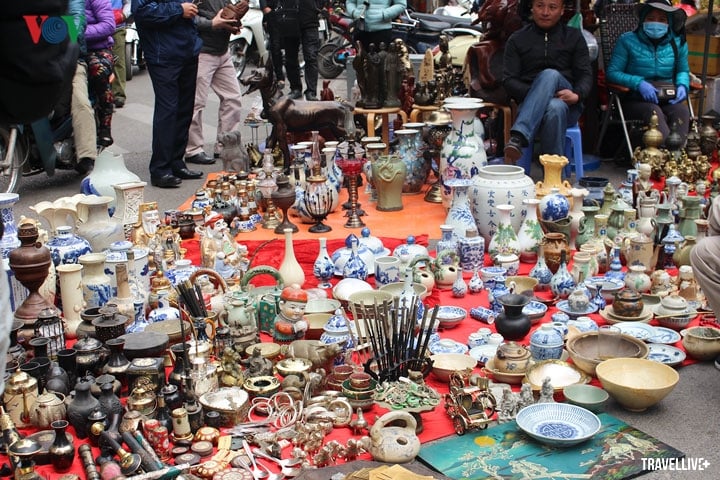
Sometimes on weekends we meet at Lam cafe on Nguyen Huu Huan street. This cafe is famous for the paintings of the "Hanoi" artist Bui Xuan Phai, which brings a lot of emotions to antique lovers like me. Many people say that people with this kind of hobby are often "crazy" and artistic, with unpredictable temperaments. I like that idea, because only very artistic and romantic people can recognize the hidden values behind the ugliness of the thick cotton coat that our ancestors called "ao dai can" or the engravings on ancient coins. At such meetings, we often discuss newly collected items, share ways to preserve them, and tell each other stories about them. Everyone has their own hobby of collecting. Some people bring Soviet items, some hold war memorabilia, some old books, some coins... Have you ever noticed that those old things exude the charm, elegance or nobility of their owners?


Writer Mai Lam, a brother whom I highly respect, once said: “Like clothes and shoes, watches are, in a way, just a fashion item that may suit one person but not another. Therefore, except for true collectors who have the ambition to own all kinds. Amateur collectors who play for their own interests should find for themselves a watch that suits the vast ocean. Depending on whether you are a businessman, an artist or a civil servant.”
Mr. Lam started collecting antiques in the 90s, starting with watches, to wind-up music players like Grammophon or Edison Phonograph, then masks, paintings and statues... He always cherished and took care of them as if they were a part of his body. Every time we saw the way he looked at them, listened to the ticking sound of the clock hands and nodded in satisfaction, we felt warm inside. Or the young boys I introduced to join, the first time they met the seniors, they were still shy and awkward, but gradually they showed maturity. How to hold the clip to look at the old stamps, the color of two old stamps at a glance is not strange but only when looking at them in the sunlight can you see the difference. That's how antique collectors are, they don't need to say much but always understand each other. Just through the eyes and gestures, you can see how great the passion of the fellow craftsmen is.
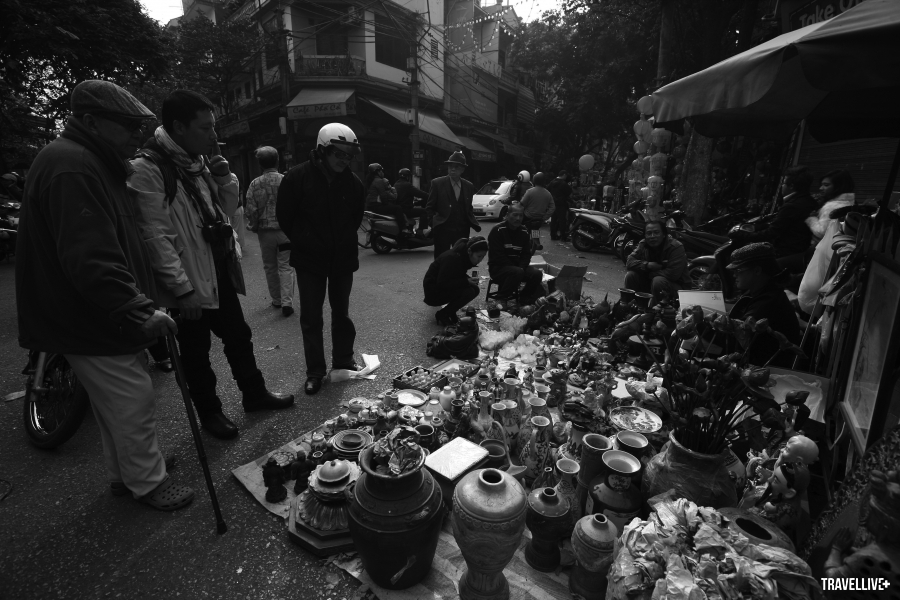
Antique market
When the swallows begin to soar in the sky, the peach blossoms turn pink, and the trees are green, it is also the time when traders, collectors and antique collectors from all over the country, mainly from the provinces surrounding Hanoi such as Bac Ninh, Nam Dinh, Vinh Phuc, etc., gather at the unique antique market in Hanoi. Although it only lasts for 10 days, parallel to the Hang Luoc flower market, it has long been a part of the spring breath of the thousand-year-old capital.
I will never forget the feeling of being led by my grandfather to the Tet market for the first time. At that time, it was still simple and not as bustling as it is now. There were still peony, violet, dong leaves and kumquat branches, but the two of us only stopped by the antique stalls. Looking, pointing, asking, confiding. Sometimes we didn’t buy anything, but sitting and talking with “fellow craftsmen” also brought back the “spring” spirit. He especially liked Buddha statues, all kinds of worship items, bronze censer, incense burner or mascots like dragon, turtle… Some were from the Tran Dynasty, some were from China or India, or simply had unique designs, all could be turned into antiques for the shop owner to charge high prices to buyers. He showed me a statue of Quan The Am, said it was from the Tang Dynasty and explained to me the characteristics, shape as well as the signs to identify an item to see when it was from, whether it was real or fake. It must be someone with profound knowledge and great passion to be able to remember something so deeply and for so long.
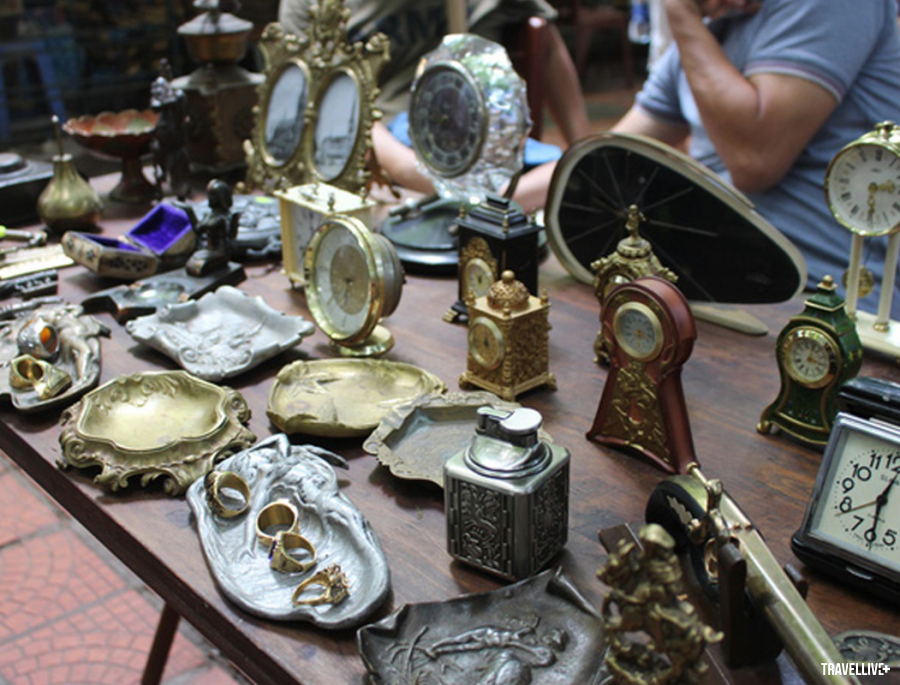
The weather this year is favorable, the monsoon is a bit chilly, with a bit of spring rain, making the transitional moment even more sacred. The old and the new meet. The antique market opens from morning to afternoon, some people come just to look but do not buy, some people only come to buy a few small things to remember the old days, but everyone is excited and unfamiliar with the items at the market. From ancient oil lamps, old swords or coal fans... looking extremely "ugly" always become a hot topic of discussion.
The prices of antiques are extremely diverse, from cheap to expensive, from a few hundred thousand to hundreds of millions of dong, depending on the actual value of the item. It may sound “exorbitant”, but most of the people who come to see the goods are fellow craftsmen, buying and selling, supporting each other. Many people are curious and sometimes pick up something interesting to show off to their friends after a day of walking around town. Buying and selling antiques at the end of the old year and the beginning of the new year also has spiritual significance and wishes for luck.
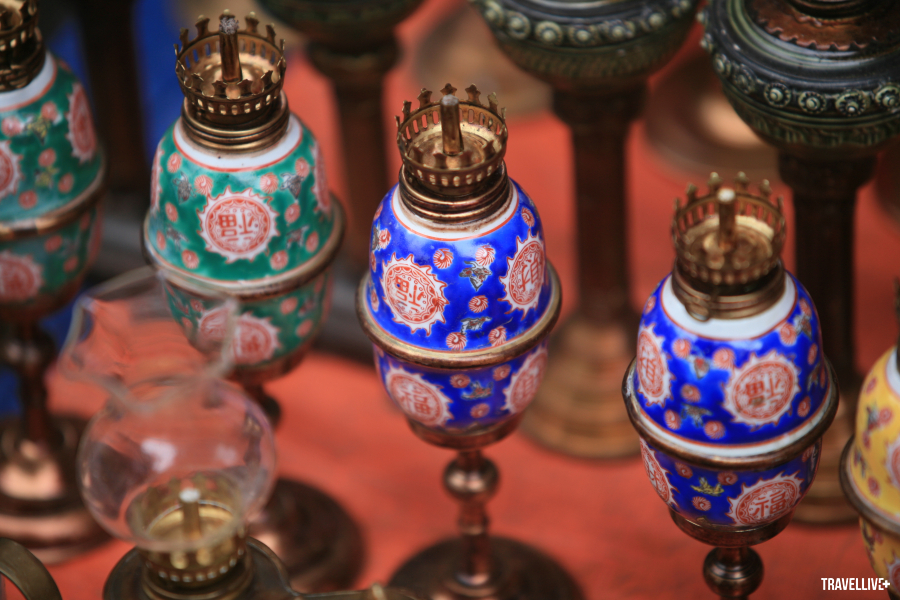
When I was a child, I always thought that antique collectors had to be rich because those objects were really valuable, but later I realized that, in addition to the money factor, first of all, the collector must have passion and knowledge. Collecting or playing antiques not only brings material values but more importantly, spiritual values. When I was bored or tired because of the hustle and bustle of market life, what lifted me up were those seemingly "thrown away" items. It reminded me that with each passing day, I myself became "antique", yesterday became old and the things I did would all become memories. Therefore, let's live in such a way that we become an "antique" that everyone must respect and love like my grandfather did.





